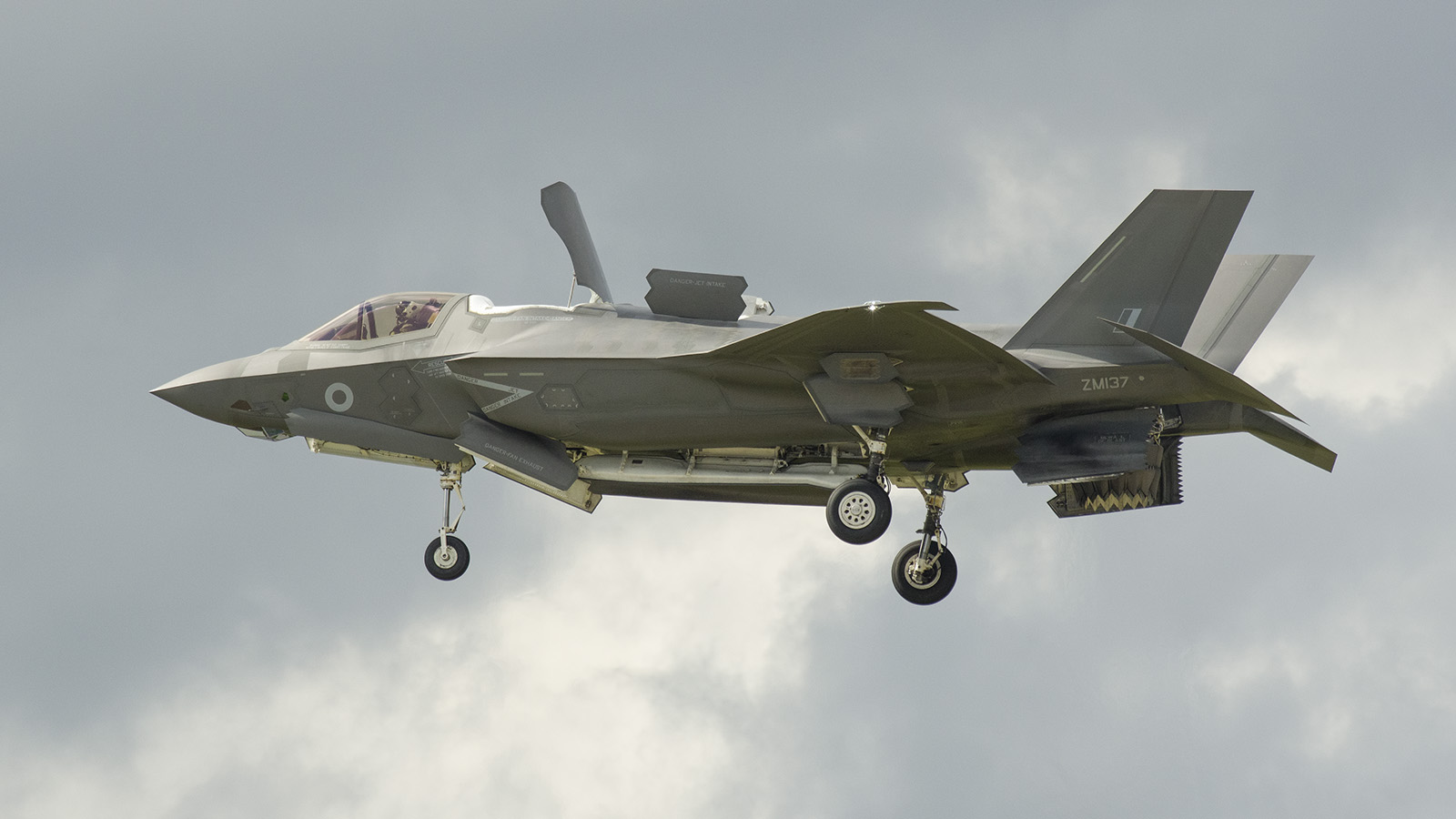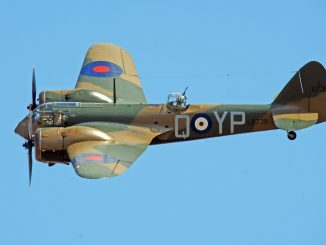
The Lockheed Martin F-35 Lightning II is an American family of single-seat, single-engine, all-weather stealth multirole combat aircraft that is intended to perform both air superiority and strike missions. It is also able to provide electronic warfare and intelligence, surveillance, and reconnaissance capabilities. Lockheed Martin is the prime F-35 contractor, with principal partners Northrop Grumman and BAE Systems. The aircraft has three main variants: the conventional takeoff and landing F-35A (CTOL), the short take-off and vertical-landing F-35B (STOVL), and the carrier-based F-35C (CV/CATOBAR).
| Role | Stealth multirole fighter |
|---|---|
| National origin | United States |
| Manufacturer | Lockheed Martin |
| First flight | 15 December 2006 (F-35A) |
| Introduction | F-35B: 31 July 2015 (USMC) F-35A: 2 August 2016 (USAF) F-35C: 28 February 2019 (USN) |
| Status | In service |
| Primary users | United States Air Force United States Marine Corps United States Navy Royal Air Force |
| Produced | 2006–present |
| Number built | 625+ as of April 1, 2021 |
The F-35B is the short takeoff and vertical landing (STOVL) variant of the aircraft. Similar in size to the A variant, the B sacrifices about a third of the A variant’s fuel volume to accommodate the SDLF. This variant is limited to 7 g. Unlike other variants, the F-35B has no landing hook. The “STOVL/HOOK” control instead engages conversion between normal and vertical flight. The F-35 can also perform vertical and/or short take-off and landing (V/STOL). Cooperation between Lockheed Corporation and Yakovlev for Yakovlev Yak-141 played an important role for development of the STOVL system of F-35B.
Operators
- Italian Navy
- Japan Air Self-Defense Force
- Republic of Korea Navy
- Republic of Singapore Air Force
- Royal Air Force and Royal Navy (joint operation)
- United States Marine Corps
Specifications (F-35B)
General characteristics
- Crew: 1
- Length: 51.2 ft (15.6 m)
- Wingspan: 35 ft (11 m)
- Height: 14.3 ft (4.36 m)
- Wing area: 460 sq ft (43 m2)
- Aspect ratio: 2.66
- Empty weight: 32,472 lb (14,729 kg)
- Gross weight: 49,540 lb (22,471 kg)
- Max takeoff weight: 60,000 lb (27,200 kg) class
- Fuel capacity: 13,500 lb (6,123 kg) internal
- Weapons payload: 15,000 lb (6,800 kg)
- Powerplant: 1 × Pratt & Whitney F135-PW-600 afterburning turbofan, 40,000 lbf (177.8 kN) thrust dry, 40,500 lbf (180.1 kN) for Vertical take-off
Performance
- Maximum speed: Mach 1.6 at altitude
- Range: >900 nmi (1,700 km)
- Combat range: 505 nmi (935 km) on internal fuel
- Service ceiling: 50,000 ft (15,000 m)
- g limits: +7.0
- Wing loading: 107.7 lb/sq ft (526 kg/m2) at gross weight
- Thrust/weight: 0.90 at gross weight (1.04 at loaded weight with 50% internal fuel)
Armament
- Guns: 1 × 25 mm (0.984 in) GAU-22/A 4-barrel rotary cannon, 180 rounds
- Hardpoints: 4 × internal stations, 6 × external stations on wings with a capacity of 5,700 pounds (2,600 kg) internal, 15,000 pounds (6,800 kg) external, 18,000 pounds (8,200 kg) total weapons payload,with provisions to carry combinations of:
- Missiles:
- Air-to-air missiles:
- AIM-120 AMRAAM
- AIM-9X Sidewinder
- AIM-132 ASRAAM
- MBDA Meteor (Block 4)
- Air-to-surface missiles:
- AGM-88G AARGM-ER (Block 4)
- AGM-158 JASSM
- SPEAR 3 (Block 4)
- Joint Air-to-Ground Missile (JAGM)
- Joint Strike Missile (JSM, planned)
- SOM
- Anti-ship missiles:
- AGM-158C LRASM
- Air-to-air missiles:
- Bombs:
- Joint Direct Attack Munition (JDAM) series
- Paveway series laser-guided bombs
- Small Diameter Bomb (SDB)
- AGM-154 JSOW
- Mk.20 Rockeye II cluster bomb
- Mk 77 incendiary bombs
- Wind Corrected Munitions Dispenser (WCMD) capable
- B61 mod 12 nuclear bomb
- Missiles:
Avionics
- AN/APG-81 AESA radar
- AN/AAQ-40 E/O Targeting System (EOTS)
- AN/AAQ-37 Distributed Aperture System (DAS) missile warning system
- AN/ASQ-239 Barracuda electronic warfare system
- AN/ASQ-242 CNI suite, which includes
- Harris Corporation Multifunction Advanced Data Link (MADL) communication system
- Link 16 data link
- SINCGARS
- An IFF interrogator and transponder
- HAVE QUICK
- AM, VHF, UHF AM, and UHF FM Radio
- GUARD survival radio
- A radar altimeter
- An instrument landing system
- A TACAN system
- Instrument carrier landing system
- A JPALS
- TADIL-J JVMF/VMF
Photos Rob Vogelaar and Marcel van Leeuwen











